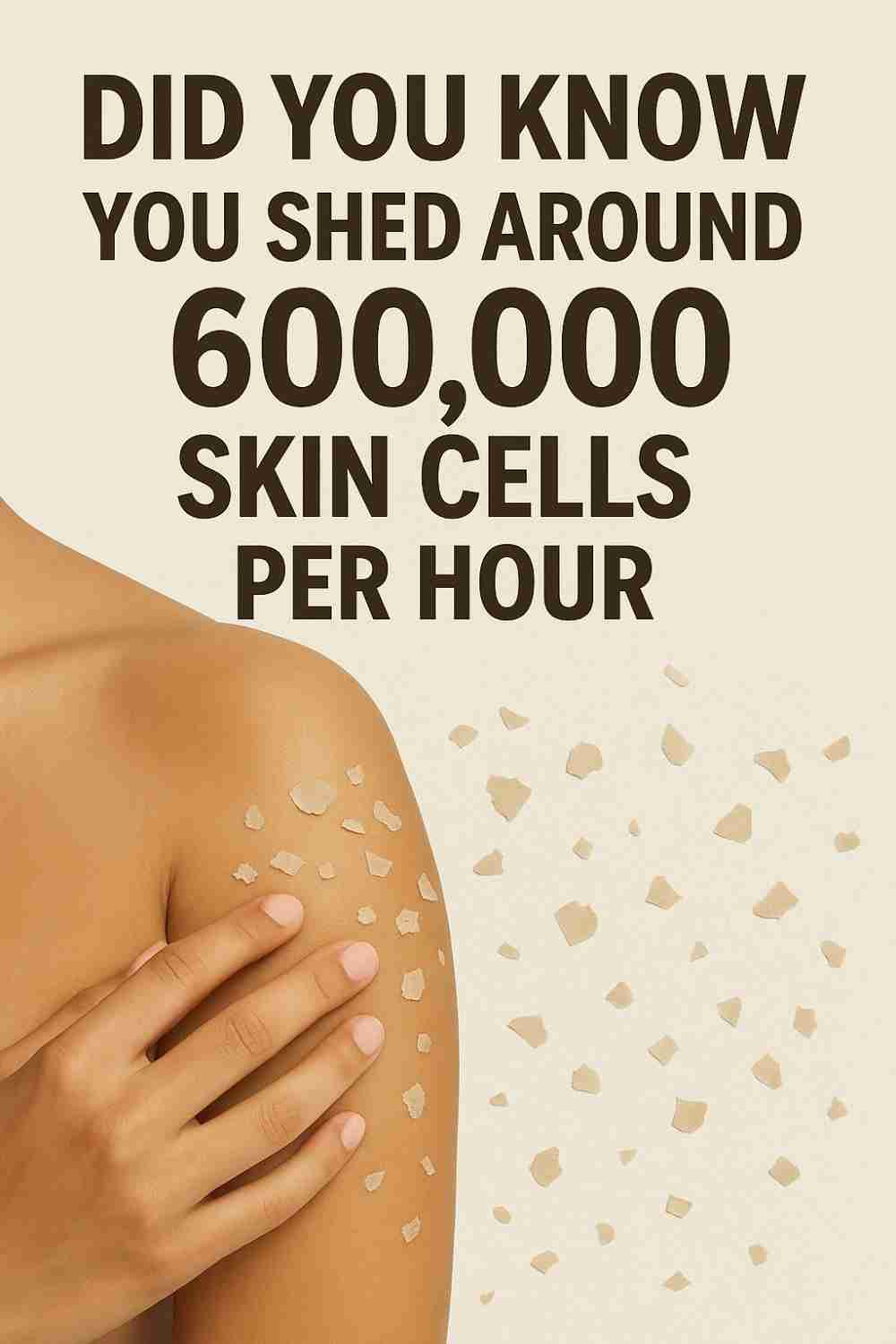 Ever stopped to think about the fact that your skin is in a constant state of rebellion? Not against you, thankfully, but against itself. Every hour, you lose roughly 600,000 skin cells. That’s not a typo. Half a million tiny flakes of you, drifting off into the world like microscopic confetti. And here’s the kicker—you don’t even notice.
Ever stopped to think about the fact that your skin is in a constant state of rebellion? Not against you, thankfully, but against itself. Every hour, you lose roughly 600,000 skin cells. That’s not a typo. Half a million tiny flakes of you, drifting off into the world like microscopic confetti. And here’s the kicker—you don’t even notice.
Your Skin Is a Serial Shedder
Let’s get one thing straight: your skin isn’t lazy. It’s working overtime, pushing new cells to the surface while the old ones get unceremoniously booted off. Think of it like a never-ending conveyor belt of renewal. The top layer? That’s the graveyard. The bottom layer? Fresh recruits, ready for duty.
But here’s where it gets wild. If you do the math (and I did, because apparently I have nothing better to do), you’re shedding about 14 million skin cells per day. By the time you finish reading this sentence, another few thousand have already abandoned ship.
Where Do All Those Skin Cells Go?
Great question. They don’t just vanish into thin air—though that would be convenient. Instead, they become part of your environment. Dust on your bookshelf? Mostly dead skin. That weird layer of “something” on your keyboard? You guessed it.
In fact, scientists estimate that up to 50% of household dust is made of human skin cells. So next time you’re vacuuming, remember: you’re basically cleaning up after your own cellular rebellion.
🔹 Fun (or gross) fact: Your pillowcase is a skin cell graveyard. Eight hours of sleep = roughly 5 million cells saying goodbye.
Why Does Skin Shed So Much?
Blame evolution. Your skin is your body’s first line of defense—against bacteria, UV rays, that questionable decision to try hot yoga. Shedding old cells keeps the barrier strong, preventing cracks, infections, and general chaos.
But here’s the twist: not all shedding is equal. Dry skin? More flakes. Oily skin? Fewer, but stickier. And if you’ve ever had a sunburn, you know the horror of sheets of skin peeling off like a bad wallpaper job.
The Myth of “Dust Mites Eating Your Dead Skin”
Let’s debunk something real quick. Yes, dust mites exist. Yes, they snack on skin cells. But no, they’re not secretly running a buffet on your mattress. The idea that your bed is crawling with microscopic freeloaders is exaggerated.
Most of those shed cells? They’re too dry and scattered for mites to bother with. So breathe easy—your sheets aren’t a bug’s all-you-can-eat diner.
Can You Stop Shedding Skin?
Short answer: No. And you wouldn’t want to. Slowing down skin turnover is what happens with aging—hello, wrinkles and dullness. Exfoliating helps, but it’s like sweeping a floor that’s constantly getting dirty again.
🔹 Pro tip: Moisturizing keeps shedding less noticeable. Dry skin flakes like a croissant; hydrated skin sheds more discreetly.
The Weird Science of Skin Recycling
Here’s something to ponder: all those skin cells don’t just disappear. They break down, mix with the environment, and—get this—some even end up in soil. In a way, you’re literally returning to the earth, one microscopic flake at a time.
Poetic? Maybe. Gross? Definitely. But also kind of beautiful in a circle of life way.
Final Thoughts: Embrace the Shed
Your body is a master of reinvention. Every hour, it ditches the old to make room for the new. So next time you see a dust bunny in the corner, don’t judge. That’s just you, leaving a tiny mark on the world—whether you meant to or not.
Now, if you’ll excuse me, I need to go vacuum. And maybe moisturize.

